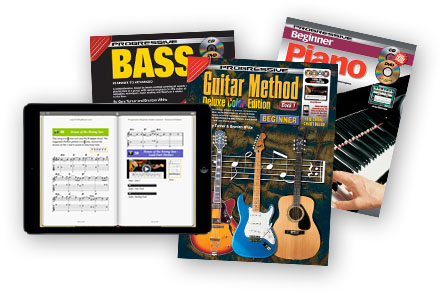<< First < Previous | Intro 1 2 3 4 5 | Next > Last >>
Back to Table of Contents
| 4 | (Fingers) |
Video
The name of the note the bass player plays is not necessarily the same as the name of the chord, e.g.: in bars 2, 3 and 4 of the above example the bass plays a different note than the chord name.
| 5 | (Fingers) |
Video
When playing the E string with your right hand fingers, you will need to use a variation on the rest stroke technique. Since there is no string for your finger to come to rest on after playing the E string, let your finger come to rest against your thumb which is resting on the pickup. This technique is demonstrated in the following photos and should be used in the next two exercises.
| 6 | (Fingers) |
Video
| 7 | (Fingers) |
Video
12 Bar Blues
12 Bar Blues is a pattern of chords which repeat every 12 bars. There are hundreds of well known songs based on this chord progression, i.e., they contain basically the same chords in the same order. 12 Bar Blues is commonly used in Rock music and is the basis of Blues music.
Songs using the 12 Bar Blues Progression
- Original Batman TV Theme
- Hound Dog – Elvis Presley
- Rock Around the Clock – Bill Haley
- Roll Over Beethoven – Chuck Berry
- Blue Suede Shoes – Elvis Presley
- In the Mood – Glenn Miller
- Good Golly Miss Molly – Little Richard
- Shake, Rattle and Roll – Bill Haley
- Barbara Ann – The Beach Boys
- Johnny B Goode – Chuck Berry
- Dizzy Miss Lizzy – The Beatles
- Surfin’ USA – The Beach Boys
12 Bar Blues in the key of E major
The following 12 Bar Blues is in the key of E major. When a song is said to be in the key of E major, it means that the most important chord (usually the first chord) is the E chord. This pattern of chords will probably sound familiar to you.
In bar 9, a new note B is introduced.
| 8 |
The small numbers next to the notes in bar 9 indicate which left hand finger to use. Whenever different or unusual fingering is required, fingering numbers are used.
| 8 | (Fingers) |
Video
<< First < Previous | Intro 1 2 3 4 5 | Next > Last >>
Back to Table of Contents


















































